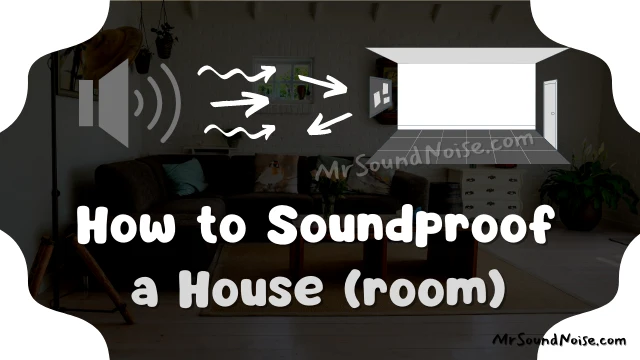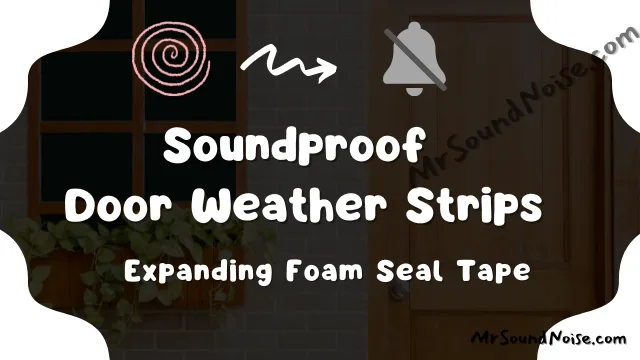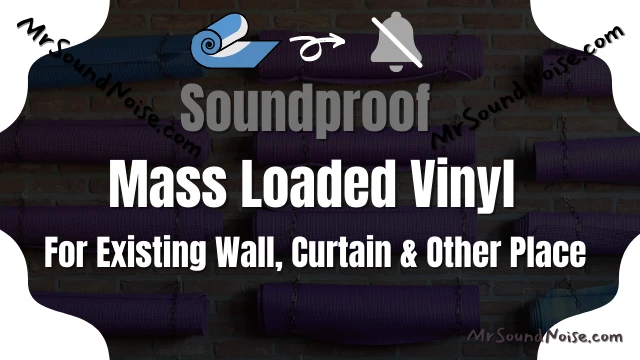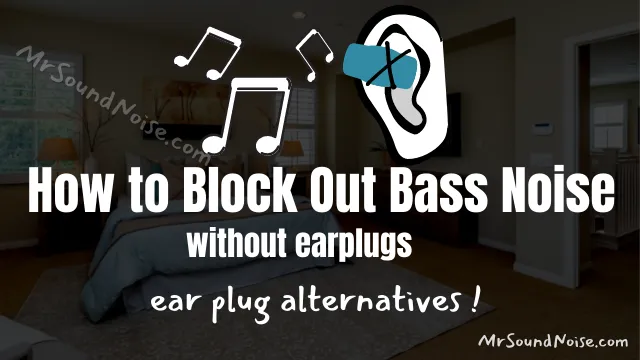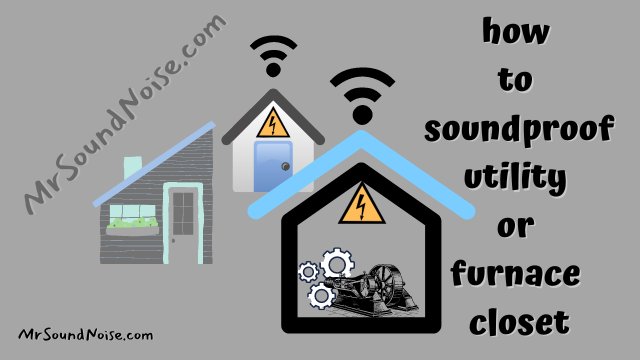
You have a separate utility house where you keep generators or other accessories. But the problem is that loud sound comes outside through the utility doors, folding doors, or other gaps.
This is why you feel disturbed when that noise comes into your room. You have already tried to find the idea for blocking that noise.
But the problem is that you can’t get enough success. You have also found reliable ideas or thoughts from other options. But you can’t reduce that utility noise properly.
In these moments, I think, you have come to the right blog site for getting reliable information on sound absorption from HVAC ducts or utility rooms.
According to my experience, I have found that an air barrier can stop noise waves.
So continue reading to know the soundproofing solution for the utility/furnace closet.
What are a Utility Room and Furnace room?
Home equipment, Cleaning equipment, electrical equipment, generator, washing machines, furnace material, and repairing tools are kept in the utility room.
This equipment is not needed regularly. When this type of room is used in the company, then it is also called a furnace room.
Now, let us talk about the main point for soundproofing the utility closets (rooms).
How to Soundproof (Reduce Noise) A Utility/Furnace Closet
There are some basic ways that you should follow the reduction of the utility noise.
After reading the notes below, you will get reliable ideas and positive results for this question: how to insulate or reduce sound waves from the HVAC closet? Notes are:
1. Find the Location for Installing Acoustic Material
At first, you should check to find door gaps or holes, cracks, and other unwanted wall holes. In these gaps, there may be live bed bugs or other insects.
Clean these insects and dust if you find those gaps. After finding all these areas, you should mark them so that you can easily block them next time.
N.B: Before cleaning dust, you should wear a face mask. Otherwise, you may blow your nose loudly because of an allergy issue.
2. Fill the Unwanted Gaps or Holes in the Utility Room
After finding these gaps, now you should be ready to block them. You can try spray foam adhesive or adhesive sealant for blocking those holes.
You should fill the unwanted gaps so that noise can’t go outside the utility room. If you are not familiar with this application, you should read the guidelines about how to fill the gaps in the door and wall side.
3. Soundproof All the Doors
Now, you should focus on fixing the old utility door. For filling the door gaps you can use weather stripping (sealant tapes) which can stop the noise from passing.
Besides, you should use adhesive sealant for blocking the small holes in the utility door. You can also use this sealant to block the door gaps too.
To soundproof the closet door, you should need acoustic treatment properly. Don’t worry, you can do it easily if you know the guidelines.
To soundproof the louvered door, you can hang mass-loaded vinyl from outside of that door.
If you are interested to know how to reduce the noise of the door of your living room, you should read these guidelines.
4. Add Decoupling Drywall to the Wall Surface
For increasing the additional sound insulation layers, you may try drywall sheets on the wall surface because wall soundproofing is important.
You should keep a distance between drywall and heat source so that this drywall will stay for a longer time.
It will be better if you use drywall and resilient channels in that place. You can add these drywall sheets by the z-clip method.
For knowing more about this channel, you can read another article where I have shared the information in easy words. You can also add the insulator to the wall where the stud method is used.
5. Soundproof the Structure of the Utility Wall
There are many reliable acoustic materials (products) and the main principles of these materials are you can use them on the wall surface for reducing noise and you can use them for other activities. They are:
- MLV (vinyl sheet)
- Fiberglass insulation
- Rockwool (fabric of mineral wool)
- Sealant for filling wall gap
- Spray foam for blocking wall holes
MLV (one kind of insulator) is the popular one among these materials. It has high acoustic material that helps a lot to reduce noise instantly.
You can use this MLV and mineral wool insulation for covering any kind of wall surface, floor, and other surfaces.
But, before installing any of these materials, you should know the easy guideline. After knowing the information, you will be able to understand which type of material is best for what location.
If you are interested in soundproofing a room wall where you live, you can do it.
6. Soundproof the Utility Floor
You should also focus on the floor for soundproofing. Here are some acoustic elements that you can apply to the floor.
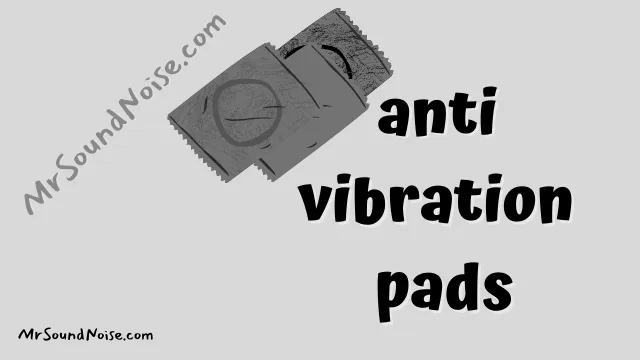
- Use Anti-vibration Pads (it helps to reduce the instant vibration and sound. If you use this type of pad under any heavy machine, then the created sound and vibration of that machine can’t pass to the floor)
- Anti-vibration mounts (also reduce the vibration and sound of different machines. It absorbs high vibration and noise too.
- Acoustic Underlayment (this type of underlayment instantly stops the passing of machine vibration and noise)
- Placing the Carpets or Rugs (if there is no heating source in the utility room, you can apply this type of rugs)
You should place anti-vibration pads under the machine that creates vibration. These types of pads reduce the machine’s vibration instantly.
You can use anti-vibration mounts to the mechanical machine if possible. You may apply acoustic underlayment to the total floor surface. This type of underlayment can also stop the noise transfer instantly.
Normally carpet is used on the floor of a living house or home. But you should not install the flammable carpet and rugs in the utility area if there is an available heating source.
This may cause firing issues at any time and this is why you should avoid carpet and other wooden material on the utility floor where heat is available.
If you are interested in soundproofing the floor of your living room, you should read with quick guidelines.
How to Soundproof a Mechanical or Machinery Room
Something should be done in the specific area for removing noises. In the mechanical room, various types of machines (air handlers, drill machines, compressors, generators, circulators, etc.) are seen. Some mechanical engineers create the acoustic metamaterial that cancels noise. (source)
For noise-reducing, you can apply some settings those are shared below:
- In the mechanical room, you can place the anti-vibration pad under the machine for low vibration. If the vibration is low, the sound will be automatically low.
- You should cover the floor surface of the mechanical room with an isolation pad or laminated pad. This will reduce maximum noise from that floor.
- For Filling the wall cavities, you may use acoustic sealant which has no pollutants.
- You may install the fireproof acoustic element on that wall.
- You can try double or multiple layers ( 5/8″ drywall for example) of drywall with the resilient channel to that wall surface.
- You may use the door gasket for hot and cold air sealing.
- You need to add a ventilation system technically so that noise can easily go outside the room.
How to Soundproof Air Conditioner Closet
If you think that you need to reduce noise from the Air Conditioner or A/C unit, you should also apply some settings for that. Such as:
One: You May Create a Soundproof Box for that A/C Unit
N.B: Remember, an air ventilation system must be included in this box. If you don’t include the ventilation systems, the heat of the air conditioners will increase quickly. As a result, A/C may not last for a longer time. Then, noise reduction of the air conditioner inside the house is important.
For making that soundproof box, you need fiberboard, cardboard, mass-loaded vinyl, acoustic sealant, etc. You also need screws, nails, a table saw or woodcutter, etc.
At first, you need to take the total measurements of the AC unit by using measurement tape. Next, you should make the soundproof box by following that measurement.
Find the gaps in that box and fill them with acoustic sealant. You should use MLV (mass load vinyl) to that box because this MLV can stop maximum sound instantly.
If you have problems making this type of soundproof box, you may work with a professional woodworker.
If your AC unit is in the ground, you can easily apply the soundproof box for covering. But you may face a problem using this box if the AC unit is adjusted in the closet walls.
Two: You May Stop the Movement of the Flaps of the Air Conditioner
You should set the flap setting so that it can’t move. Because unexpected humming noise may come from those flaps.
Three: Solve the Noise of Water Dripping
You can attach an extra hose to the air conditioning hose technically. If you are unable to do this, you should take help from a professional person.
This type of water dripping sound may disturb your sleeping time. So you should take action to solve this issue to reduce this noise.
However, I am discussing the noise reduction of the utility unit. So make sure that you have applied the reliable method to that utility section.
My Viewpoint
In the last part of this post, I just want to say that you should need to know the basic information about the best and most cheap soundproofing material.
To reduce outside noise, you should also know soundproofing panels that are required for you for specific wall spaces or living spaces.
There are also some differences between soundproofing a private room (bedroom), recording studio room, laundry room, soundproofing a utility, and soundproofing an HVAC closet.
Your bed frame may squeak at any time and there is also a reason. That is the reason why I have tried to share some important notes in this post.
If you don’t know anything about soundproofing walls and any place in the world, you should read my total writing for more information.
You may install acoustic material in the water pipes if these pipes are available near the utility closet.
If you find some squeaking sounds coming from your shoes while walking in the furnace room, you may also solve this.
Here, I have described the utility and furnace room for your better understanding. After reading this topic, you can distinguish between a private living room and a utility room.
You will also understand how to reduce unwanted sound transmission from those places. Here, I have also introduced some reliable soundproofing elements that you can easily apply in specific locations.
If you want to know more about these acoustic things, you can read from other posts on this website.
I have also shared some methods that you may follow if you want to reduce unwanted noise from the utility or furnace closet.
Before installing the soundproof elements, you should collect all the instruments that you may need at that time.
You will get all the tools and items in the marketplace. But be sure that you should collect the right material for installation in the right place.
Before purchasing, you should check the quality and return policy of the material that you want to install in the utility room.
It will be better for you to take help from a professional person for the installation of fundamental acoustic elements in the utility place.
You need to spend some money if you want to soundproof the utility room. This soundproofing setup will be also a good investment with less cost for the future.
Sound-reducing devices, insulation foams (acoustic foam panels), and bass traps are also created for reducing environmental noise.
If you want to know more data about this topic, you may read the total FAQ section. In this section, there are some important questions and answers included. You should read all the answers to know more.
If you are interested you may read the different topics those are given below:
Finally, I want to tell you that you should also focus on reducing noise from the room where your children live. If you can create a silent area in your living and working place, you may enjoy your life more beautifully.
FAQ: Soundproofing Furnace Closet
Is the Furnace Closet or Utility Room Too Hot All the Time?
Hot air is circulating regularly inside the pipes and air vents of the furnace. That is why high temperatures in that area may be available in a specific condition.
In the utility place, hot weather may be available because of a lack of air movement. So the proper ventilation system is needed in that place for removing this hot air from the utility.
You should set this ventilation to the upper location of the utility/furnace so that some noise can go out from this place.
How Do You Soundproof Your Utility Spaces (HVAC closet/unit)?
The full meaning of AC comes from A=air and C=conditioning. On the other hand, HVAC systems come from H=Heating, V=Ventilation, A=Air, and C=Conditioning.
Now you have to understand that there is an extra maintenance system (heating and ventilation) in the HVAC unit.
To soundproof the HVAC closet you need to apply basic methods that I have already shared in this article.
You need to focus on applying acoustic elements to the interior door, skylight, concrete wall, shed (one kind of ceiling), and floor.
You may decouple the wall if possible. Adding acoustic type mass to the area is very important for modification of the Closet Walls.
If you read this total post, you will be able to understand what type of soundproofing material is required to install in the HVAC, utility, furnace closet, and water heater.
Are Compressor Sound Blankets Safe?
Most people know that soundproof blankets are used for reducing sound from the ceiling, room, or any area. An acoustic moving blanket with clips is safe to use in the air conditioning closet.
But you will be happy to know that some specific blanket is designed for reducing compressor noise. Acoustic material is included in this type of blanket.
You can easily cover the compressor with specific guidelines. You can use this type of blanket safely for blocking more noise.
How Can You Make your Outside AC Unit Quieter?
You may try the sound blanket on the outside AC unit. Besides, you may set the plywood fence around the AC unit.
For frequent airflow, you should keep a gap between the fence and compressor. For preparing the fence, you may need a woodcutter, hammer, and a few other materials.
I think you can prepare this type of normal fence for that AC unit. If you do not have enough time, you should take help from a professional person.
How Do You Insulate or Reduce Noise From a Loud Furnace?
For doing the soundproof setting in the furnace, you should wrap the ductwork (flexible air duct) with the duct liner or soundproof duct wrap (sound barrier).
You may install sound barrier (soundproofing) curtains in the furnace room. Be sure that the soundproof material that you want to set up in that area, must be fireproof for up to a specific temperature.
Which is the Quietest Furnace to Use in a Silent Place?
There are many brands of quietest furnaces that you can try. But before collection, you must read the factors and guidelines for operating the selected furnace with combustion air.
Besides, you should also focus on the noise level of that furnace. You should select the furnace which has silent comfort technology and creates low decibel (dB) sounds.
You may get help to get a walk-in closet design with clothes from SilentComfortTM Technology too.

